NCERT Solutions for Class 5 EVS Chapter 13 - A Shelter So High
Class 5 EVS Chapter 13 showcases the variation in houses according to the changes in geographical locations and the factors affecting them. The chapter includes— cold deserts and typical features of houses built there. mountainous regions and people's living styles. the houses made in the early days. different materials used for building houses. The NCERT textbook (Looking Around) questions are answered in a simple and engaging manner. We also have related ‘Learning Concepts’, and interactive worksheets with solutions. Our ‘Learning Beyond’ segment caters to all the probable questions that the child might think out of curiosity. Download Chapter 13 A Shelter So High! in the PDF format for free.
Download PDF For NCERT Solutions for EVS A Shelter So High
The NCERT Solutions for Class 5 EVS Chapter 13 - A Shelter So High are tailored to help the students master the concepts that are key to success in their classrooms. The solutions given in the PDF are developed by experts and correlate with the CBSE syllabus of 2023-2024. These solutions provide thorough explanations with a step-by-step approach to solving problems. Students can easily get a hold of the subject and learn the basics with a deeper understanding. Additionally, they can practice better, be confident, and perform well in their examinations with the support of this PDF.
Download PDF
Access Answers to NCERT Solutions for Class 5 EVS Chapter 13 - A Shelter So High
Students can access the NCERT Solutions for Class 5 EVS Chapter 13 - A Shelter So High. Curated by experts according to the CBSE syllabus for 2023–2024, these step-by-step solutions make EVS much easier to understand and learn for the students. These solutions can be used in practice by students to attain skills in solving problems, reinforce important learning objectives, and be well-prepared for tests.
Find Out
Gaurav Jani passed through several states while going from Mumbai to Delhi. Find the capital cities of these states. Was there any other big town on his way?
The states through which Gaurav Jani passed were—Gujarat, Rajasthan, Madhya Pradesh, Uttar Pradesh, Haryana, Punjab, Uttarakhand, and Himachal Pradesh.
The capital cities of the above-mentioned states are given in the following table—
| State | Capital |
|---|---|
| Gujarat | Gandhinagar |
| Rajasthan | Jaipur |
| Madhya Pradesh | Bhopal |
| Uttar Pradesh | Lucknow |
| Haryana | Chandigarh |
| Punjab | Chandigarh |
| Uttarakhand | Dehradun |
| Himachal Pradesh | Shimla |
Some big towns on the way were Ahmedabad, Udaipur, Jaipur, Ajmer, Surat, Gurugram.
Is Manali a plain or hilly area? In which state is it?
Manali is a hilly area located in the state of Himachal Pradesh.
Check in your map. Which state would one pass through while travelling from Mumbai to Kashmir?
A person will cross the following states while travelling from Mumbai to Kashmir—
Gujarat, Rajasthan, Madhya Pradesh, Uttar Pradesh, Haryana, Punjab, Uttarakhand, and Himachal Pradesh.
Tell
Have you ever stayed in a tent? Where? What was it like?
Yes, I had stayed in a tent when I went on a camping trip to Leh. It was a new and adventurous experience for me. Living in a tent made me learn how we must be prepared to stay outdoors.
Imagine that you were to stay alone in a small tent for two days and could take with you only ten things. Make a list of those ten things.
I would take the following things with me—
i) Clothes including lots of winter clothing
ii) Blanket
iii) Torch
iv) Packed food
v) Packaged drinking water
vi) Portable stove
vii) Insect repellent cream
viii) Sturdy shoes
ix) Camera
x) Map of the area
[Students should mention their experience based on the above lines.]
What are the different types of houses that you have seen? Tell your friends about it. Make drawings too.
I have seen a variety of houses. Some of them are described below —
i) Thatched huts—made of dry leaves and mud walls.
ii) Pucca houses—made of bricks, concrete and cement.
iii) Stilt houses—made on bamboo stilts.
iv) Tent—made of fabric
v) Boat house—The house where a boat is converted into a comfortable house with all amenities.
vi) Mud house—made of stone and mud.
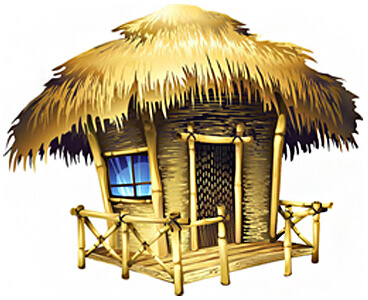
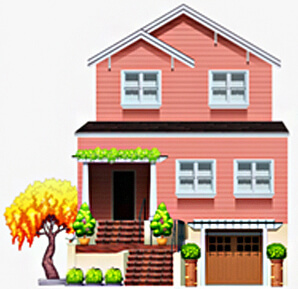
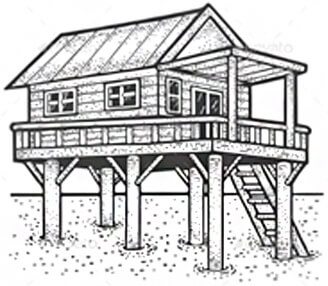
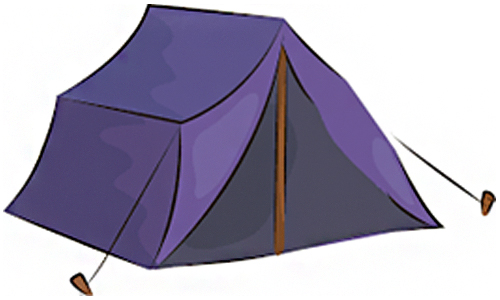


[Students should mention their experience based on the above lines.]
Write
What is the roof of your house like? What all is the roof used for?
The roof of my house is flat and is made of bricks and cement.
We use the roof for the following purpose:
i) For drying clothes
ii) For drying foods like pulses, rice, chips, pickles etc.
iii) For organising small family functions and parties
iv) In summers, sometimes we sleep on the roof as it is cooler.
[Students should mention their experience based on the above lines.]
During winters, Tashi and his family live on the ground floor. Why would they be doing so?
The benefits of living on the ground floor are as follows—
i) As ground the floor has another floor on top, it remains warm.
ii) Less number of windows prevents the cold winds from coming in.
Find Out
At what height was it? Did you have any difficulty in breathing there?
Leh is about 3500 metres from sea level, and Shimla is around 2200 metres. Yes, I found it difficult to breathe when I was there. So, our tour guide asked us to stay at the hotel for a day to acclimatise ourselves to the place.
[Students should mention their experience based on the above lines.]
Have you ever been to a hilly place? Where?
Yes, I have been to Leh and Shimla.
[Students should mention their experience based on the above lines.]
At what height is the place where you live?
I live in Mumbai. It is situated at the height of 14 metres above sea level.
[Students should mention their experience based on the above lines.]
Which is the highest place you have been to?
The highest place I have been to is Leh. It is about 3500 metres from sea level.
[Students should mention their experience based on the above lines.]
Why did Gaurav Jani say— “This place is so high that it is difficult to breathe normally?”
Air is colder and thinner at high altitudes where the level of oxygen is less. Hence, people who are not comfortable at high altitudes find it difficult to breathe at such places.
The Changpas
List five ways in which different animals are a part of your life.
Five ways in which we depend on animals are given below—
i) Animals are kept as pets, such as cats, dogs, and parrots.
ii) Animals are reared for milk, such as cows, buffalo, and goats.
iii) Animals are reared for eggs, such as hens, and ducks.
iv) Animals are used for carrying loads, like bullocks, donkeys, and horses.
For the Changpas their animals are a very important part of their life. Is any animal part of your life? For example, as a pet, or as helpers in farming.
I have a pet dog which is an important part of my life. Its name is Coco.
[Students should mention their experience based on the above lines.]
Do goat and sheep need their own fur and wool? Discuss.
The wool we get from goat and sheep is the hair of these animals. Hair protects its body from cold. So, goats and sheep need fur and wool in the winters. However, in the summers, this coat of hair would lead to overheating these animals’ bodies and hence, are sheared.
Find Out
You read that in Changthang the temperature drops below 0°C. Look at newspaper or on the TV to find cities in India or abroad where the temperature drops below 0°C. In which months do you expect to see this?
In the following cities, the temperature drops below 0oC during winters—
i) In India (December-January): Shimla, Ladakh, Leh
ii) Outside India: Ottawa (October-April), Helsinki (October-April)
[Students should mention their experience based on the above lines.]
Tell
The houses in different parts of Jammu and Kashmir are made to suit the climate and the needs of the people there.
What are the materials used for making your house? Is it mud, brick, stone, wood or cement?
The materials used for making my house are brick, cement, concrete, wood and iron.
[Students should mention their experience based on the above lines.]
Think of your own house. Is there something special in it—like a sloping roof as it rains a lot, or a courtyard where you can sleep when it is hot or where things are kept in the sun (for drying, etc.).? Make a drawing.
My house is in Rajasthan. It is built according to the climate there.
My house has the following features—
i) There will be high roofs so that the house remains cool in the summers.
ii) An open terrace.
iii) Balconies and large windows for ventilation.
[Students should mention their experience based on the above lines.]
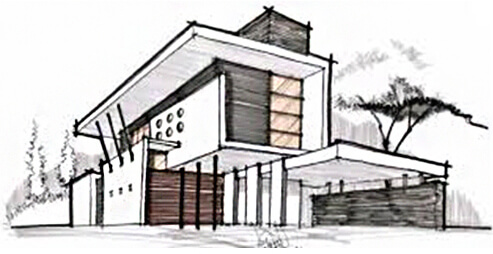
Are there different types of houses in the place where you live? If yes, think about the reasons.
Yes, I have seen the following types of houses in my locality—
i) Multi storeyed buildings: These are made in areas that have space constraints. More houses can be built in a multi-storeyed building
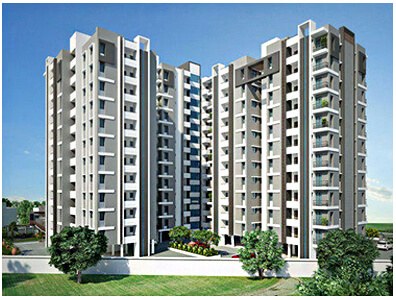
ii) Bungalows: People construct bungalows when they have their land

iii) Slums: Here, houses are made of bricks, cement and tin shades as roofs. The houses are very closely built due to a dearth of space.
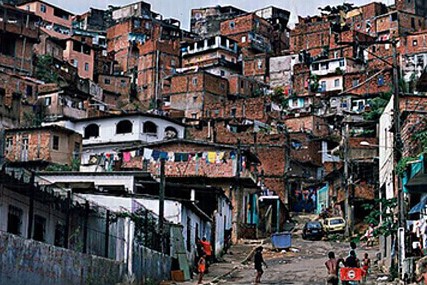
[Students should mention their experience based on the above lines.]
Discuss and Write
Can you guess the similarities and differences in the life of Bakarwal people and the life of the Changpas?
Similarities between Bakarwals and Changpas—
i) Both dwell in the mountains of Jammu and Kashmir.
ii) Both tribes are wanderers and move from one place to another.
iii) They are dependent on animals like goats, yak, sheep, etc., for milk and fur.
iv) They earn their livelihood by selling wool obtained from these animals.
Differences between Bakarwals and Changpas—
| Bakarwals | Changpas |
| They are not specific about the breed of goats and sheep they breed. | They are specific about the breeds of goats and sheep as all the breeds are not capable of surviving at higher altitudes. |
| They stay at lower altitudes. | They stay at higher altitudes. |
| They live in houses made of stone and mud. | They live in tents made of animal skin. |
What We Have Learnt
You read about different kinds of shelters in Jammu and Kashmir – some on high mountains, some on water, some with beautiful designs in wood and stone, and some mobile shelters that can even be packed and carried to another place.
Describe how these shelters suit the needs of the people who live there.
I have read about the following types of houses in Jammu and Kashmir. Each type suits the needs of its occupants.
i) The houseboat and donga are complete and self-sufficient houses. They have all the amenities required for living normally.
ii) The houses made of stone and wood provide good insulation during cold weather.
iii) Tent house, used by Changpas is good for the people’s migratory lifestyle.
How are these different from the house you live in?
My house is different in the following ways—
i) It is made of bricks, cement, concrete and iron.
ii) We permanently occupy it.
iii) It is not built to withstand extremely cold conditions.
iv) It cannot be moved as it is fixed to the ground.
[Students should mention their experience based on the above lines.]
Frequently Asked Questions
The NCERT solution for Class 5 Chapter 13: A Shelter So High is important as it provides a structured approach to learning, ensuring that students develop a strong understanding of foundational concepts early in their academic journey. By mastering these basics, students can build confidence and readiness for tackling more difficult concepts in their further education.
Yes, the NCERT solution for Class 5 Chapter 13: A Shelter So High is quite useful for students in preparing for their exams. The solutions are simple, clear, and concise allowing students to understand them better. They can solve the practice questions and exercises that allow them to get exam-ready in no time.
You can get all the NCERT solutions for Class 5 EVS Chapter 13 from the official website of the Orchids International School. These solutions are tailored by subject matter experts and are very easy to understand.
Yes, students must practice all the questions provided in the NCERT solution for Class 5 EVS Chapter 13: A Shelter So High as it will help them gain a comprehensive understanding of the concept, identify their weak areas, and strengthen their preparation.
Students can utilize the NCERT solution for Class 5 EVS Chapter 13 effectively by practicing the solutions regularly. Solve the exercises and practice questions given in the solution.

